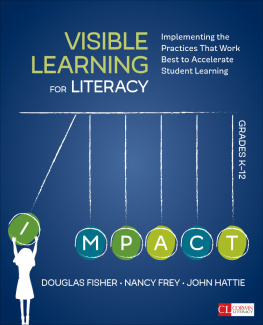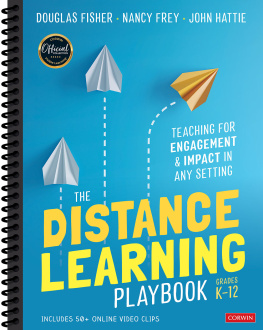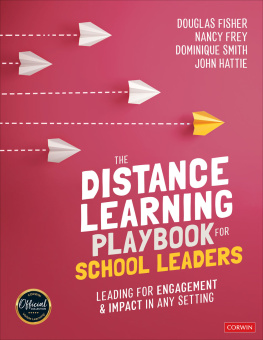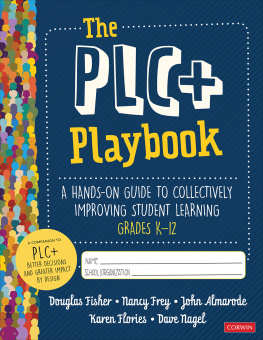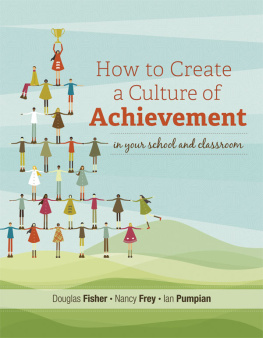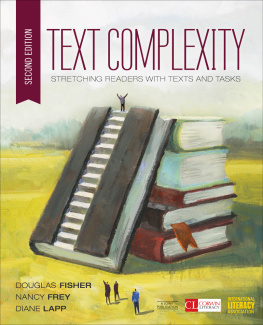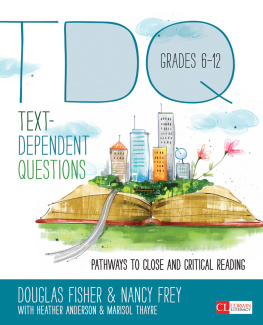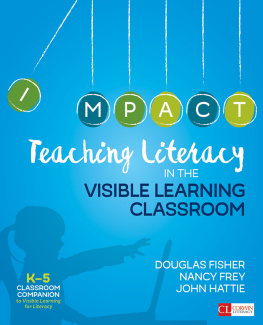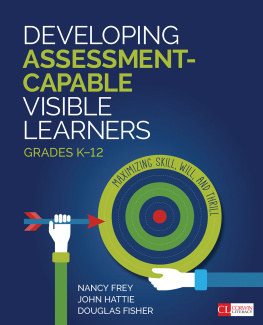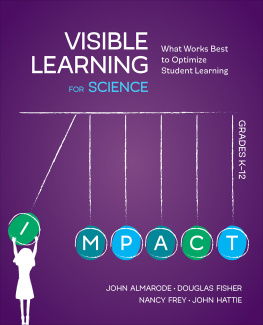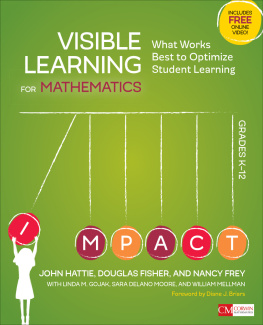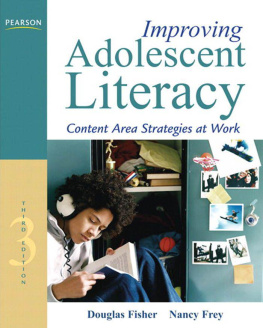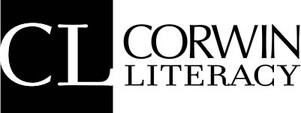Douglas Fisher - Visible Learning for Literacy, Grades K-12: Implementing the Practices That Work Best to Accelerate Student Learning
Here you can read online Douglas Fisher - Visible Learning for Literacy, Grades K-12: Implementing the Practices That Work Best to Accelerate Student Learning full text of the book (entire story) in english for free. Download pdf and epub, get meaning, cover and reviews about this ebook. year: 2016, publisher: SAGE Publications, genre: Religion. Description of the work, (preface) as well as reviews are available. Best literature library LitArk.com created for fans of good reading and offers a wide selection of genres:
Romance novel
Science fiction
Adventure
Detective
Science
History
Home and family
Prose
Art
Politics
Computer
Non-fiction
Religion
Business
Children
Humor
Choose a favorite category and find really read worthwhile books. Enjoy immersion in the world of imagination, feel the emotions of the characters or learn something new for yourself, make an fascinating discovery.
- Book:Visible Learning for Literacy, Grades K-12: Implementing the Practices That Work Best to Accelerate Student Learning
- Author:
- Publisher:SAGE Publications
- Genre:
- Year:2016
- Rating:3 / 5
- Favourites:Add to favourites
- Your mark:
Visible Learning for Literacy, Grades K-12: Implementing the Practices That Work Best to Accelerate Student Learning: summary, description and annotation
We offer to read an annotation, description, summary or preface (depends on what the author of the book "Visible Learning for Literacy, Grades K-12: Implementing the Practices That Work Best to Accelerate Student Learning" wrote himself). If you haven't found the necessary information about the book — write in the comments, we will try to find it.
Every student deserves a great teacher, not by chance, but by design Douglas Fisher, Nancy Frey, & John Hattie
What if someone slipped you a piece of paper listing the literacy practices that ensure students demonstrate more than a years worth of learning for a year spent in school? Would you keep the paper or throw it away?
We think youd keep it. And thats precisely why acclaimed educators Douglas Fisher, Nancy Frey, and John Hattie wrote Visible Learning for Literacy. They know teachers will want to apply Hatties head-turning synthesis of more than 15 years of research involving millions of students, which he used to identify the instructional routines that have the biggest impact on student learning.
These practices are visible for teachers and students to see, because their purpose has been made clear, they are implemented at the right moment in a students learning, and their effect is tangible. Yes, the aha moments made visible by design.
With their trademark clarity and command of the research, and dozens of classroom scenarios to make it all replicable, these authors apply Hatties research, and show you:
Teachers, its time we embrace the evidence, update our classrooms, and impact student learning in wildly positive ways, say Doug, Nancy, and John. So lets see Visible Learning for Literacy for what it is: the book that renews our teaching and reminds us of our influence, just in time.
Douglas Fisher: author's other books
Who wrote Visible Learning for Literacy, Grades K-12: Implementing the Practices That Work Best to Accelerate Student Learning? Find out the surname, the name of the author of the book and a list of all author's works by series.

